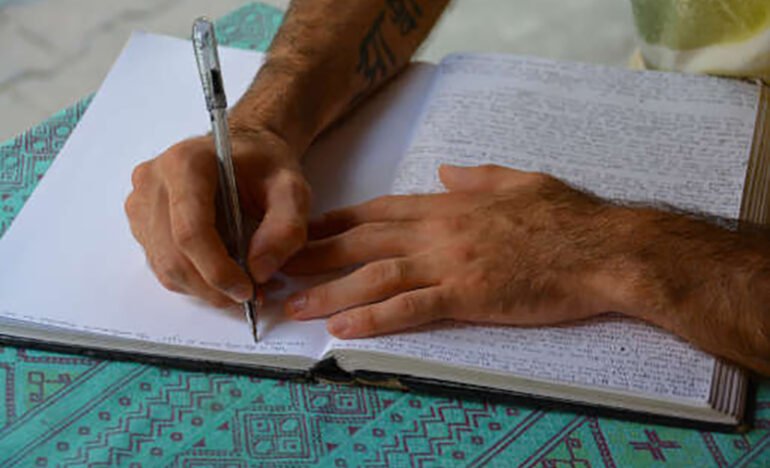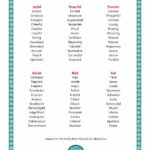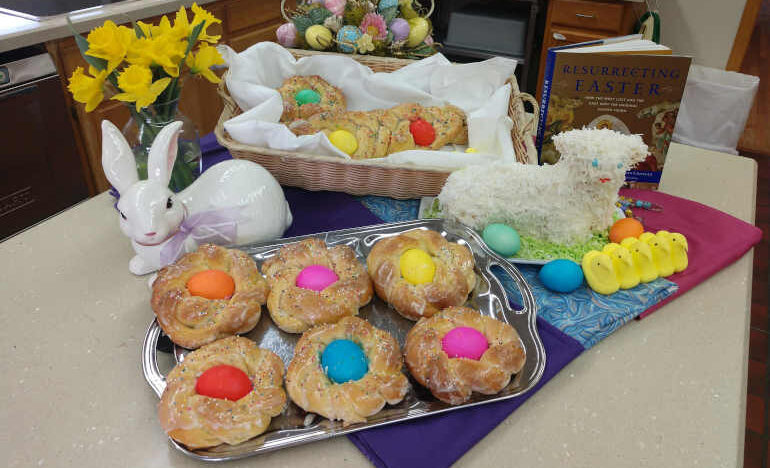Writing from the Heart: The Contemplative Practice of Journaling

Contemplative practices connect our souls intimately with the divine that lives within us. Over time we begin to mirror our inherent likeness to the One who created us and delights in us. Contemplation can give a seeking soul an experience of a felt sense of the Living God within. This experience is always a precious gift from God. We cannot manufacture this treasure; however, we can plant the seeds and fertilize the grounds of our hearts through contemplative prayer. One way to make room for the Sacred One is through the practice of journaling.
It’s fruitful to take a moment of silence before you begin to pen that which stirs within. Silence opens our hearts to the indwelling Spirit and allows our words to be born from the depths of our souls. Descend from your mind to your heart so that your words stem from the gentle whisper within.
So you may be asking what do I write about? Journaling about something that caught your attention in Scripture, in nature, in a book, or in a lived experience may be where you are led on a given day. Writing about life situations can be fruitful and lead to solutions born from your inner wisdom. Some spiritual books offer reflection questions as do some spiritual journals.
I have journaled for years and am frequently surprised at what surfaces. I have found that putting my thoughts and feelings into specific words makes me dig deeper.
I have journaled for years and am frequently surprised at what surfaces. I have found that putting my thoughts and feelings into specific words makes me dig deeper to uncover just exactly what is stirring in the depths of my soul. It can also be edifying to go back and re-read journal entries from the past to re-live how God touched me on a particular day.
Our written reflection can be enhanced or deepened by responding to one or more of the following questions:

- Feelings – What feeling are evoked as you ponder? What do these feelings say to you? To help with this, click on the icon to your right to download a “feeling chart.” It is a pdf file and you can print it from your computer. It is an excellent tool used to pinpoint your emotional response.
- Image – What image comes to mind as you reflect? What does this image say to you?
- Word – What word comes to mind as you meditate? What does this word say to you?
- Color – What color comes to mind as you contemplate? What does this color say to you?
- Felt Sense – How is your body responding? What do you feel happening within your body? What is your body saying to you?
To give you a personal example of how an image can be meaningful, I will tell you about an experience I had in spiritual direction as a directee. I was discerning my next step in life. My spiritual director asked me what image comes to mind when I ponder my current situation. I pictured myself drowning with a rock tied around my neck. Then she asked what image comes to mind when I think of leaving that situation. I instantly imagined colorful balloons gracing a beautiful blue sky. It became abundantly clear which direction I was being led. Both of those images reappear in my mind’s eye from time to time providing clear direction in new situations.
Identifying a word or color that comes to mind as we reflect will have a similar affect as naming an image in that the word or color will hold personal significance for us. If our favorite color is blue and that is the color that comes to mind, it’s likely a positive response. Identifying an emotion is telling as well.
Our bodies tell us a lot, but we often do not listen. Stress may manifest itself in tightening shoulders. A sense of freedom may feel like a spacious opening in our core. Discerning our bodily response can be enlightening.
Sometimes when I journal, I am drawn to listen to the words that I hear with the ear of my heart.
Sometimes when I journal, I am drawn to listen to the words that I hear with the ear of my heart that God is communicating to me. I then jot those down. These words are very special in the moment but also down the road when I revisit the journal entry.
I recommend spending a moment in silence once your journaling is complete. Fill your soul with a felt sense of the presence of God by resting in the divine embrace.
So many people shy away from this meaningful experience because of their harsh critique of their writing skills. The words that are born from that place deep within you are bound to be words that are meant just for you in that moment. Trust all that springs forth from the recesses of your soul for it is there that the Spirit dwells.
Answers to some common questions:
1) Should I journal every day?
My recommendation is to be led by the Spirit. Journal when you are being drawn to do so. This may be daily but not necessarily. There are times when I journal daily for a period of time. Then months may go by before I begin journaling again. There are times when I sense a nudge to journal.
2) How long should I journal? Should I set a goal for a certain amount of time journaling or a number of words or pages?
Once again, I would rely on the Spirit to guide you. Some days your entry may be quite lengthy while on other days, it may be rather brief as you capture what is stirring within you.
3) Do you recommend a certain type of notebook?
I prefer to use a bound journal that can be purchased at Tuesday Morning, Mardel Christian Store, Barnes and Nobel, Target, or other similar stores. It may be your personal preference to use a spiral notebook or loose leaf paper.
4) Does it matter if I use a pen or pencil?
I prefer to use a pen but once again this is personal preference.
5) What about using different colors of ink or colored pencils?
Sometimes words are not sufficient to express what you are experiencing spiritually. I find it helpful to have markers, colored pencils, or crayons available to express yourself with color. Our next reflection will deal specifically with art journaling.
6) Can I write my journal on a computer?
Once again this is personal preference. Even though I am very comfortable using a computer, I am drawn to journal with pen on paper.
Note: New articles in this series will be posted to the website every Monday and Wednesday. Full series can be found here: An Invitation to Something New: The Contemplative Life. On Thursday’s we’ll send an email to remind you of the articles.
[Kathy Keary, a Precious Blood Companion and spiritual director, holds a master’s degree in theological studies and is a graduate of the Atchison Benedictine’s Sophia Center’s Souljourners Program, an intense study of spirituality and spiritual direction. Kathy believes that the divine is present and active in all of life and encourages others to be awakened to the God in all including the divine within. She enjoys accompanying others on their journey to wholeness discovering the person they were created to be.]
Image above by Dean Moriarty from Pixabay
Related

Easter Bread (Pane di Pasqua)
By Lucia Ferrara
Easter bread is a fun bread. It’s a fun bread to make with your children, with your family, with neighbors and friends. The tradition of Easter bread dates back centuries and comes from many parts of the world.

Easter Sunday, the Resurrection of the Lord
Today’s scriptures tell us how three days changed the world. How have they changed you?
Categories
Assembling God's Puzzle Coffee with Padre Cooking & Spirituality Encounters of the 4th Kind Family Matters Reflections on the Eucharsitic Prayers Spiritual Resources Taize Prayers The Contemplative Life Traveling with Pilgrims of Hope Uncategorized Videos Week of Prayer for Uhristian Unity When you need a little help
